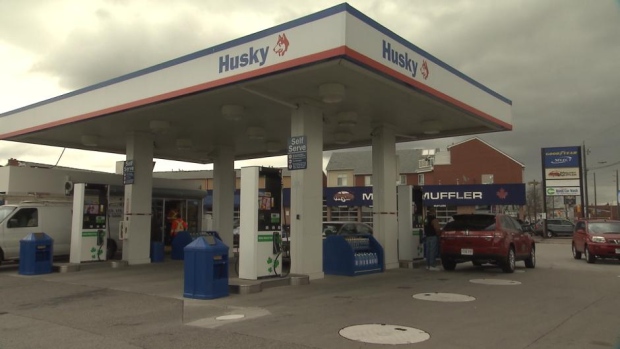Oct 26, 2017
Husky Energy beats profit expectations on higher production
Reuters

Canadian oil and gas producer Husky Energy Inc (HSE.TO) reported a better-than-expected quarterly profit on Thursday amid higher production and oil prices, and further cut its capital budget for 2017.
The Calgary-based company expects to spend $2.2 billion to $2.3 billion (US$1.7 billion to US$1.80 billion) this year, less than its previous estimate of $2.5 billion to $2.6 billion. Earlier this year, it cut 2017 spending by $100 million.
Husky, like other Canadian oil sands companies, has been trying to reduce costs to offset the effect of volatile oil prices.
It joined a number of other energy firms that cut 2017 capital budgets on Thursday, including Canada's MEG Energy (MEG.TO) and international oil major ConocoPhillips (COP.N), reflecting a focus on controlling costs as oil prices hover just above US$50 a barrel (CLc1).
"Since last December, our total capital budget has come down by about $400 million. Half of this reduction is due to improvements in our capital efficiency," Husky Chief Financial Officer John McKenzie said on a third-quarter earnings call.
The company reported a 5.6 per cent rise in average production to 318,000 barrels of oil equivalent per day in the third quarter, helped by increased output at its thermal bitumen developments.
Higher output was complimented by an increase in average realized prices for crude oil to $40.05 per boe from US$33.11 per boe a year earlier.
Husky will add around 40,000 barrels per day of heavy oil from its thermal operations in the Lloydminster region of western Canada by 2020.
It continues to ramp up output at its Sunrise oil sands project in northern Alberta, which produced 44,300 bpd in the third quarter, up 44 per cent on the same period a year earlier.
Husky reported net earnings of $136 million, or 14 Canadian cents per share, which beat analysts' average estimate of 3 Canadian cents, according to Thomson Reuters I/B/E/S.
In the year-ago quarter, Husky posted a net profit of $1.39 billion, which included nearly $1.5 billion in asset sale-related gains. On an adjusted basis, it lost $100 million.
The company's funds from operations surged 44 per cent in the latest quarter, helped by higher U.S. refining margins. During the quarter, Husky struck a deal to buy a 50,000 bpd refinery in Superior, Wisconsin, for US$435 million, to increase its crude processing capacity.
Husky shares were up 0.8 per cent on the Toronto Stock Exchange at $16.39



